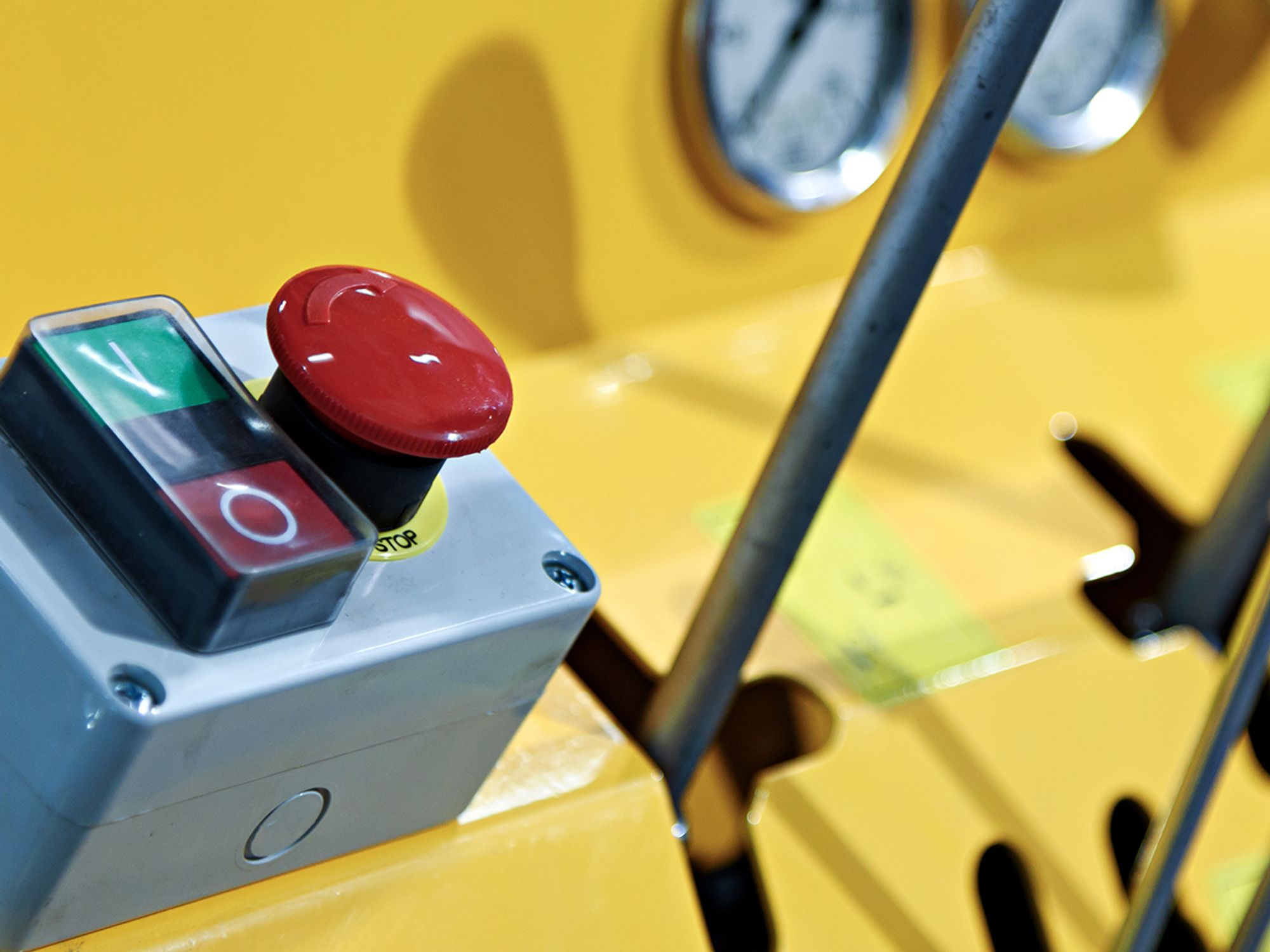OSHA safety colors

- OSHA specifies using red to signify fire protection, DANGER, and STOP, and yellow to signify CAUTION and physical hazards.
Originally, the Occupational Safety and Health Administration (OSHA) had safety color codes for red, orange, yellow, green, blue, purple, black, white, and combinations of black and white. The use of each of these colors was specified at 29 CFR 1910.144. However, in 1978, the agency revoked several of the provisions and colors from the regulation, leaving only a few color applications for red and yellow. OSHA determined that, in the interest of employee protection, these remaining red and yellow provisions would not be revoked.
Safety red
According to OSHA, red shall be the basic color for the identification of:
- Fire protection equipment and apparatus,
- DANGER, and
- STOP.
Additional uses of red:
- Portable containers of flammable liquids having a flash point at or below 80°F and table containers of flammable liquids, excluding shipping containers, shall be painted red, with either a yellow band around the can or the name of the contents conspicuously stenciled or painted on the can in yellow.
- Red lights shall be provided at barricades and at temporary obstructions.
- Danger signs shall be painted red.
- Emergency stop bars on hazardous machines such as rubber mills, wire blocks, and flat work ironers shall be red.
- Stop buttons or electrical switches that have letters or other markings and are used for emergency stopping of machinery shall be red.
Safety yellow
OSHA states that yellow shall be the basic color for designating CAUTION and for marking physical hazards such as striking against, stumbling, falling, tripping, and getting caught in between.
Revoked safety colors
OSHA explains that many of its pre-1978 provisions for 1910.144 were “unnecessarily detailed.” Colors used by themselves were not very effective because there were no criteria for the hue and, therefore, there was no standardization in the physical application. According to OSHA, the protection of employees could be better addressed by the use of signs with both color and legend. The agency added that color used by itself may cause those who are color blind to fail to understand the intended message.
Some of OSHA’s concerns have been corrected in American National Standards Institute (ANSI) standard Z535.1, which defines specific color tolerances, making the color choices uniform. Also, ANSI has adjusted color tolerances so they are distinguishable for color-deficient vision.
While the application of color by itself cannot replace required signs and/or training, such application can still reinforce the message of any required sign or training.
It is important to acknowledge the now-revoked color meanings from a historical perspective. An employer may opt to apply these colors to go above and beyond current OSHA regulations. The following text includes the revoked passages from 1910.144(a). The present passages from 1910.144(a) are not shown below.
- (1) Red. Red shall be the basic color for the identification of:
- (i) Fire protection equipment and apparatus.
- (a) Fire alarm boxes (pull boxes).
- (b) Fire blanket boxes.
- (c) Fire buckets or pails.
- (d) Fire exit signs.
- (e) Fire extinguishers (if painting the extinguisher is impractical or undesirable, color should be used on the housing, wall, or support to identify the location).
- (f) Fire hose locations (color should be used on the reel, supports, or housing but not on the hose).
- (p) Fire hydrants (industrial).
- (h) Fire pumps.
- (i) Fire sirens.
- (j) Post indicator valves for sprinkler system (it is suggested that if a traffic hazard is involved, the top should be colored red, and the barrel or post yellow and black stripes).
- (k) Sprinkler piping. (See ANSI Standard Scheme for the Identification of Piping Systems, A13.1-1956.)
- (i) Fire protection equipment and apparatus.
- (2) Orange. Orange shall be used as the basic color for designating dangerous parts of machines or energized equipment which may cut, crush, shock, or otherwise injure and to emphasize such hazards when enclosure doors are open or when gear belt, or other guards around moving equipment are open or removed, exposing unguarded hazards.
- (4) Green. Green shall be used as the basic color for designating “Safety” and the location of first aid equipment (other than firefighting equipment).
- (5) Blue. Blue shall be the basic color for designating caution, limited to warning against the starting, the use of, or the movement of equipment under repair or being worked upon.
- (6) Purple. Purple shall be the basic color for designating radiation hazards. “Radiation” as used in this subparagraph refers to radiation types such as X-ray, alpha, beta, gamma, neutron, proton, deuteron, and meson. Yellow should be used in combination with purple for markers such as tags, labels, signs, and floor markers.
- (7) Black, white, or combinations of black and white. Black, white, or a combination of these two, shall be the basic colors for the designation of traffic and housekeeping markings. Solid white, solid black, single color striping, alternate stripes of black and white, or black and white checkers should be used in accordance with local conditions.
Similarly, it may be of value to revisit the revoked passage from 1910.144(b), which stated, “(b) Color specifications. Colors shall meet the tests specified in section 3, Color Definitions, of ANSI Z53.1-1967, Safety Color Code for Marking Physical Hazards.”
